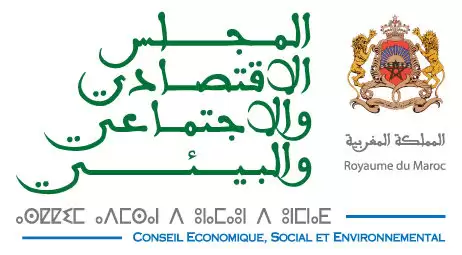
ASA-C4-022019-45-6914-fr
Dans cet avis, élaboré dans le cadre d’une autosaisine, le CESE a choisi de le faire de manière prospective pour construire des scenarii à horizon 2030, 2040 et 2050 et explorer ainsi les options stratégiques à adopter dès aujourd’hui.
Cet avis a été adopté, à l’unanimité, par les membres du Conseil lors d’une assemblée extraordinaire, tenue le 16 juin 2020. La vision Royale de positionner le Maroc à l’avant-garde de la transition énergétique mondiale, qui a notamment donné lieu en 2009 aux plans solaire et éolien marocains, a placé notre pays sur une trajectoire nouvelle susceptible d’amener des bénéfices économiques sociaux et environnementaux considérables. La COP22 organisée à Marrakech en 2016 a consacré le leadership du Maroc dans ce domaine.
L’expertise acquise par les acteurs marocains depuis le lancement de la stratégie de 2009 ainsi que l’évolution technologique qui a connu des ruptures fondamentales au cours des 4 dernières années créent une donne nouvelle. En effet, les coûts des énergies renouvelables sont désormais les plus compétitifs. Les derniers appels d’offres éoliens au Maroc en 2015 ont été adjugés à 0,30 DH/kWh tandis que, dans le domaine du photovoltaïque, le dernier appel d’offre dans la région Moyen-Orient a été attribué à un tarif équivalent à 0,13 DH/kWh dans des conditions similaires à celles de notre pays.
Il s’agit de chiffres qui étaient inenvisageables auparavant, qui amènent un changement profond de paradigme et qui appellent à accélérer la concrétisation de la Vision Royale avec une approche d’implémentation rénovée. L’énergie peut ainsi devenir le déclencheur d’une nouvelle émergence verte du Maroc.
Le potentiel énergétique marocain en énergies renouvelables, désormais plus compétitif, est en effet remarquable. Il représente virtuellement une capacité de production équivalente au gaz et au pétrole du Nigéria ou du Venezuela. L’exploitation de ce gisement, permettrait de réduire fortement notre dépendance énergétique, d’améliorer le pouvoir d’achat des citoyens, la compétitivité de nos industries et les comptes publics mais aussi de consolider le positionnement international de notre pays.
Le Maroc peut, en effet, dans un proche avenir, jouer un rôle fondamental pour l’approvisionnement de l’Europe en énergie verte via l’électricité ou l’hydrogène, redessinant ainsi les équilibres géopolitiques de notre région. Les nouveaux engagements européens de neutralité carbone en 2050, formalisés dans le Green New Deal, ouvrent cette opportunité. Une étude allemande a récemment classé le Maroc parmi les 5 meilleurs pays au monde pour le développement d’un tel partenariat énergétique.
Pour toutes les raisons énumérées ci-haut, le CESE s’est autosaisi de cette question de la transition énergétique. Le Conseil a choisi de le faire de manière prospective pour construire des scenarii à horizon 2030, 2040 et 2050 et explorer ainsi les options stratégiques à adopter dès aujourd’hui.
Pour cela, le Conseil s’est entouré d’experts nationaux du secteur, et a auditionné 63 spécialistes du secteur et parties prenantes dont notamment les ministères et opérateurs concernés comme MASEN, l’ONEE, l’IRESEN, l’AMEE, l’OCP et la CGEM. Le CESE est arrivé à un consensus fort au niveau de ses composantes, représentants des organisations patronales, des syndicats et de la société civile, sur le fait que le Maroc devrait œuvrer à la mise en place d’une stratégie renouvelée pour la transition énergétique au bénéfice de ses citoyens.
Les bénéfices potentiels sont très significatifs. Le Maroc peut passer d’une dépendance énergétique de près de 88% aujourd’hui à 35% en 2040 et moins de 17% en 2050. En parallèle, le coût moyen de l’électricité sur le réseau pourrait baisser de 0,79 DH/kWh aujourd’hui à 0,61 DH/kWh en 2040 et 0,48 DH/kWh en 2050.Afin d’atteindre ces bénéfices, la modélisation prospective montre la nécessité de se lancer dans une stratégie qui considère la transformation énergétique dans son ensemble au-delà de l’électricité et au-delà des usages classiques. Il convient pour cela de :
- Consacrer quasi-exclusivement les capacités électriques à venir aux sources renouvelables et au stockage (STEP, batteries et technologies en cours de développement) ;
- Maximiser la production électrique décentralisée au niveau des foyers, des industries, des communes, des exploitations agricoles, des coopératives, etc. ;
- Transformer progressivement la mobilité qui représente 40% de la consommation énergétique totale actuelle pour maximiser le recours au transport en commun durable et aux voitures électriques ;
- Mettre en œuvre une politique coordonnée pour l’efficacité énergétique ;
- Investir dans le dessalement par les énergies renouvelables dont le coût connait également un trend baissier pour adresser, en partie, la problématique du stress hydrique ;
- S’arrimer à la révolution hydrogène (Power-to-X) dans laquelle les avantages comparatifs du Maroc sont considérables.
Pour y arriver, le CESE recommande notamment, d’adopter les principes suivants pour la mise en place de cette stratégie renouvelée :
- La considérer de manière holistique pour tirer profit de toutes les synergies entre les initiatives listées précédemment ;
- S’accompagner d’une refonte du cadre juridique et de la gouvernance pour s’adapter aux évolutions du secteur et d’une reconfiguration des politiques publiques qui touchent à l’énergie en traitant de manière coordonnée et intégrée, plusieurs politiques connexes, actuellement, pensées et élaborées en silos ;
- Donner une plus grande place à l’initiative privée à toutes les échelles en s’assurant de la sécurité d’approvisionnement globale ;
- Reposer sur une adhésion citoyenne élargie avec l’implication des citoyens et des territoires pour créer la mobilisation et lier la transition énergétique aux enjeux du développement local.
Sur ce dernier point, au niveau national, le CESE recommande de mettre en place une charte de la transition énergétique telle que contenue dans la Lettre Royale adressée aux premières Assises nationales de l’énergie, en mars 2009.
Au niveau continental, le CESE recommande un engagement marocain pour l’électrification de l’Afrique ainsi que la mise en place des infrastructures pour l’échange d’électricité propre avec l’Afrique de l’Ouest, en particulier.
Au niveau international, le Maroc a les atouts pour prendre une place dans la nouvelle économie verte et notamment la filière hydrogène. Ceci peut se concrétiser par la mise en place d’un nouveau partenariat énergétique entre le Maroc et l’Europe incluant les dimensions de transfert technologique, de recherche et développement et de développement industriel.


